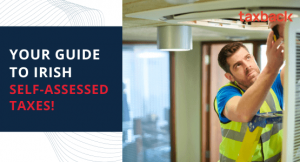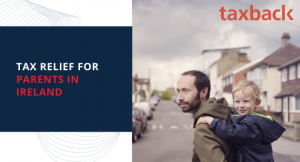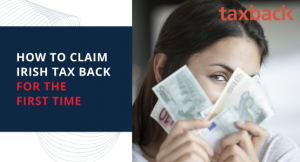The Pink Tax - Do Women Pay More? We Investigate...
Mother’s Day is just around the corner and many of us will be popping into our nearest pharmacy or drugstore to pick up a gift for the mothers in our lives.
But something you may (or may not) have noticed is that female products – particularly beauty and feminine hygiene products - cost more than similar, if not the exact same products for men.
In recent years, there’s been a bit of a hullabaloo about this blatant price difference and it’s been labelled the ‘pink tax’ by journalists, scholars and activists. Some dispute that it doesn’t exist while others, including big brands like Tesco, are campaigning to abolish the extra cost added to women’s products.

But before I get into the facts and figures… We should probably clear something up...
Is the Pink Tax a government levy?
There is a common misconception that the ‘pink tax’ is a legitimate tax imposed by a government body. It is not an official, literal levy on women’s products. It’s an additional cost added by retailers, manufacturers and brands to products that are marketed towards women. Often the packaging on these products happens to be pink, hence the name.
The facts and figures
In a 2015 study carried out by NYC Department of Consumer Affairs, they found that on average women’s products cost 7% more than men’s (for similar/identical products) - and it wasn’t just hygiene and beauty products.
These hyped up prices were applied to lots of things, from a study of 794 products, these are the items that stood out most:
7% more for toys and accessories
4% more for children’s clothing
8% more for adult clothing
13% more for personal care products
8% more for senior/home health care products
In all but 5 of the product categories analysed, products marketed towards females were priced higher than those marketed towards male consumers. They found that 42% of the time, women’s products cost more while men’s products cost more 18% of the time. Women also pay more for services. For instance around 56% more for haircuts and 92% more for dry cleaning.
Want to Claim a Tax Refund?
But how much more are women paying exactly...? and why?
Around half the world’s population are subject to this ‘tax’. What’s worse is women are getting the short end of the stick with products and services costing more and the combined implications of a gender pay gap, which exists in many countries worldwide. Here in Ireland, the gender pay gap is around 14% meaning women get paid on average 14% less than their male counterparts for every hour worked. This number is still lower than the EU 16% and UK 21% averages. Across the pond in the US, women bring in 82c for every dollar a man makes. There is an undeniable gap in wages and in prices for women.
Women are paying more for products and services
In a lifetime, a woman will pay more than men 42% of the time for the previously mentioned items. That’s a little over €1000 per year or an estimated €88,516 per lifetime. This comes down to pricing; next time you’re in a drugstore or a supermarket, check out brands that supply equivalent products for men and women. Take something like shampoo, razors, shower gel, moisturiser and compare the prices between women’s and men’s products. What you’ll likely find is the exact same product with slightly different packaging and a very different price.
Of course, some people say “well women have a choice, why not just buy men’s products?” And while yes that’s true to a certain extent, there’s a lot more at play here and there should be an ethical burden on the brands to rectify the pink tax, not consumers.
There are also things, let’s just say *ahem* personal items that are a necessity to women, but not men that are legally taxed much higher than necessary. You might be interested to know that women’s feminine hygiene products are classed as a “luxury” item and are therefore taxed at a higher rate in countries like Ireland, the UK and the US.
If you’re not sure what luxury tax is, it’s generally a tax added to items that are deemed non-essential like expensive furs and jewellery. Items that are subject to luxury tax vary from country to country. They fall into the same category as excise taxes or sin taxes like cigarettes and alcohol, so yeah, it’s kind of crazy that necessary feminine hygiene products are taxed as a luxury.

Why does this happen?
There are many factors here but essentially, brands believe women are less “price-sensitive” and elastic when it comes to prices which basically means women are willing to pay more.
It’s true that sometimes companies spend more on the development of women’s products but most of the time they’re using marketing to their financial advantage. Female consumers have been conditioned to overlook these prices and are used to paying more for these items because, well that’s how it’s always been. Companies are marketing these products as specialised products to increase profits. And why do they hike up the price of women’s products? Well, that’s simple, because they can!
Prices are determined from the manufacturing cost combined with what customers are willing to pay. Brands spend a lot on marketing to make these products appealing and unfortunately, it works.
The funny thing is, particularly when it comes to clothing, that women’s products are often smaller and therefore should cost less to manufacture. However, the price is still higher, this is sometimes referred to as the ‘shrink it and pink it’ strategy. Make it smaller, market it towards women and charge a premium price.
What is being done about the Pink Tax?
Well, some companies have taken it upon themselves to remedy the pink tax. This includes UK retailers Tesco and Boots who cut the price of women’s razors in half.
In California, they’ve introduced a law that prevents gender-based price differences in services but not goods as of yet. The “tampon tax” has been taken to court with a class action lawsuit in the state of Ohio where plaintiffs are fighting for a refund of the tampon tax and the introduction of bills to get rid of the tax.
Canada, Kenya and India have tackled the so-called 'tampon tax' by either abolishing it entirely or drastically reducing the tax rates on feminine hygiene products.
Some changes have been made but we still have a long way to go before prices are made fairer on a global scale.
Want to Claim a Tax Refund?
What can I do to offset the Pink Tax and have more money in my pocket?
Taxback.com help customers claim tax back from 13 countries worldwide including Ireland, the UK, Luxembourg, Germany, Japan, the US, Australia, Austria, Belgium, Denmark, Holland, Canada and New Zealand. We can help you claim back any overpaid tax and guide you through all of the tax reliefs that you can claim – meaning you get your maximum legal refund.




